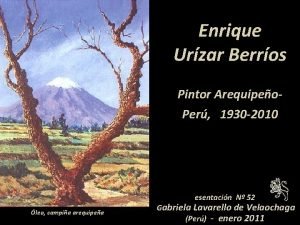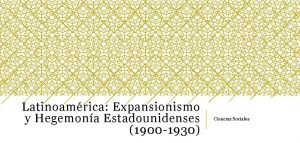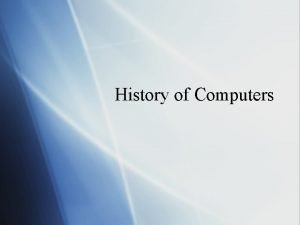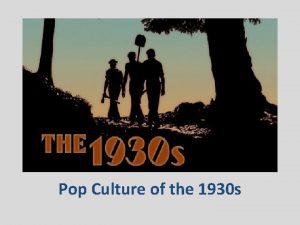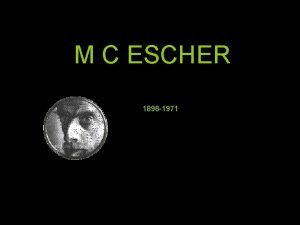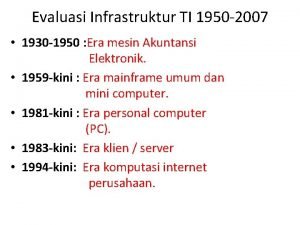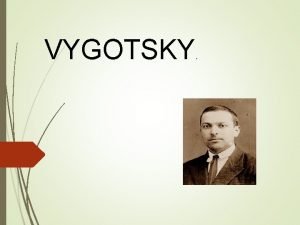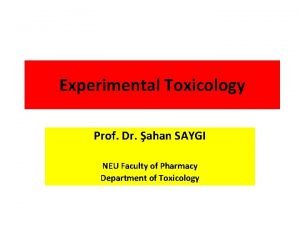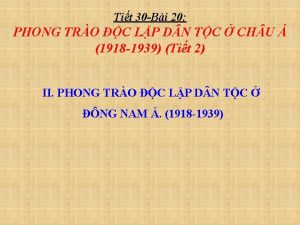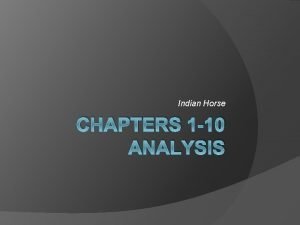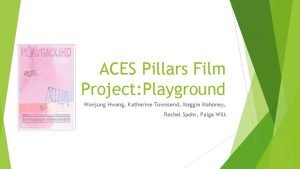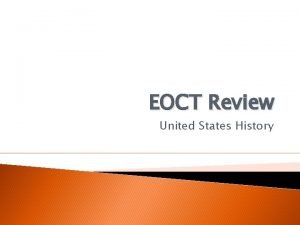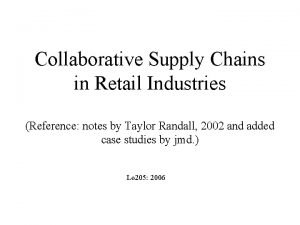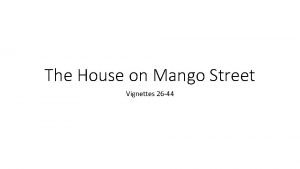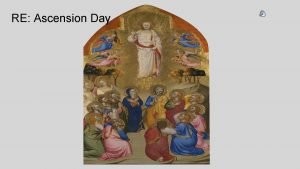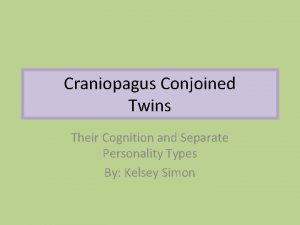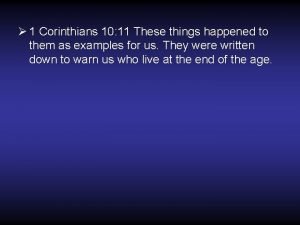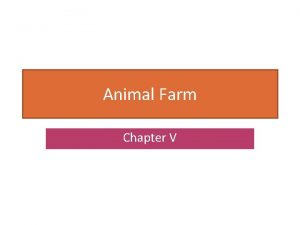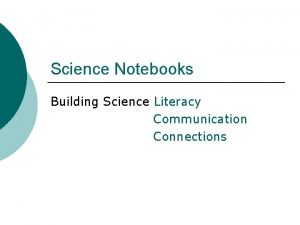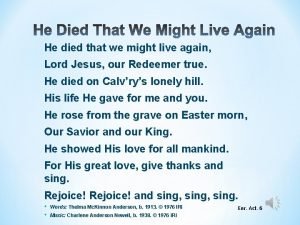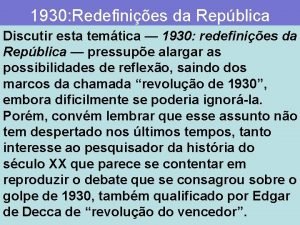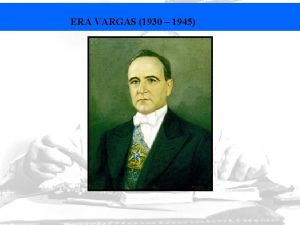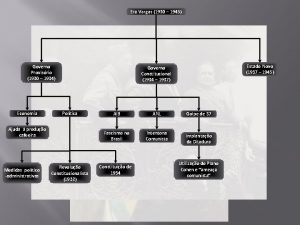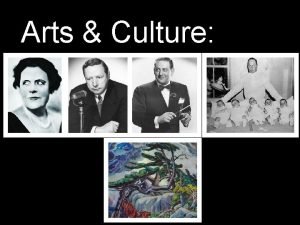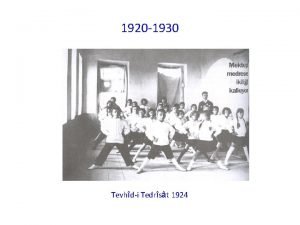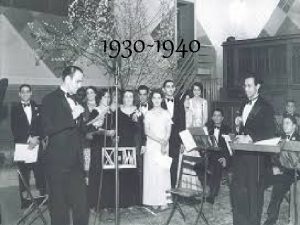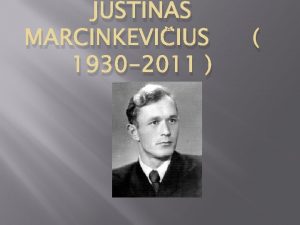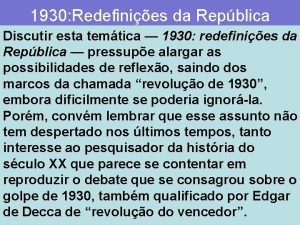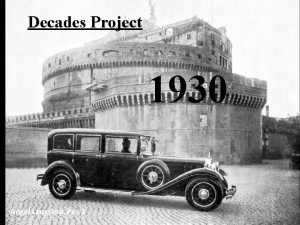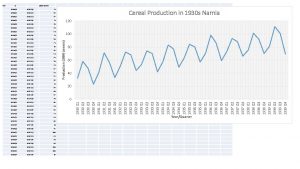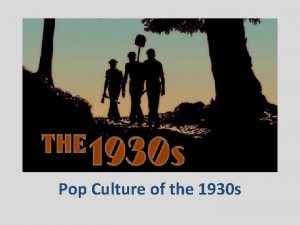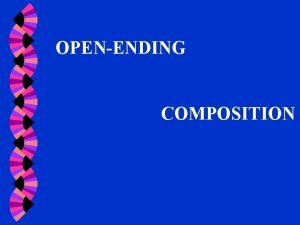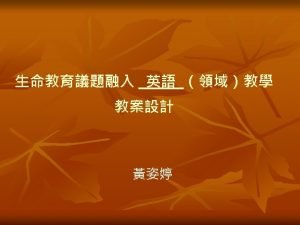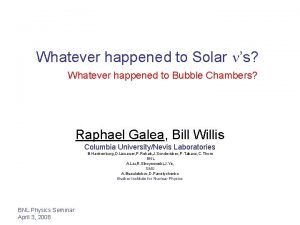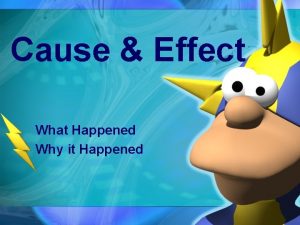What happened to computing 1930 80 is now
























































- Slides: 56

What happened to computing 1930 -80 is now happening to biology Friden mechanical calculator: 1930 -1966 Friden electronic calculator: 1965 Intel 4004 mproc: 1971 Sharp single chip calculator: 1977

What happened to computing 1930 -80 is now happening to biology % cells damaged by transfection Pre-2000 Proportion of cells transfected - Example: electroporation The complete protocol Today Tomorrow

Another example: automated parallel mini-preps

The geek shall inherit (systems) biology Pathway/ interaction DBs / literature cell-specific, comprehensive, kinetic and quantitative data Computation Biology Technology data analysis experiments to test hypotheses experimental planning model construction model analysis hypothesis formulation

2 complementary approaches in systems biology: Top-down, global, systematic Bottom-up, local dynamics • • Focus on nonlinear interactions • Study irreducible systems • Analyzing emergent (difficult-topredict, nonlinear) properties • Hypothesis and model-driven • Discovery science via high throughput ‘omic technologies Screening - multi-target/multi-component drugs - multi-parameter disease signatures • Observation & data-driven global climate local weather

The yeast galactose utilization pathway – bottom up view Galactose Gal 2 p (transporter) + feedback Gal 3 p Gal 1 p (kinase) Galactose 1 -phosphate + feedback Gal 3 p* UDP-galactose Gal 7 p (transferase) Gal 10 p (epimerase) Gal 80 p - feedback Gal 4 p UDP- glucose Gal 80 de Atauri et al Biochem J. 2005 Glucose 1 -phosphate Gal 4 p UGP 1 PGM 2 GPH 1 GSY 2 TPS 1 TSL 1 TPS 3 GSC 2 FKS 1 FKS 3 Gal 4 p Gal 2 1, 3 -â-Glucan Gal 4 p Threhalose synthesis Glucose 6 -phosphate Glycogen synthesis Gal 1, 7, 10

The yeast galactose utilization pathway – top down view

How do we make sense of this?

A network graph viewed in Cytoscape; what does it do?

An Exclusive OR gate out = XOR • in 1 in 2 1 • 4 out 3 2 in 1 in 2 NOR 1 NAND 2 NOT 3 NOR 4 0 0 1 1 0 0 0 1 0 1 1 0 0 1 0 1 T 1 2 • in 1 in 2 Vdd • T 5 . • T 2 3 T 4 • T 11 T 6 4 • • • T 7 5 T 8 T 9 T 10 6 • • 7 T 12 8 • out = XOR T 13 T 14 Gnd 0 NOR (1) NAND (2) NOT (3) NOR (4)

“Guilt by association” network analysis Phagocytosis Fas Cell adhesion Translation Actin polymerization m. RNA stability p 38 pathway Red nodes: down-regulated Green nodes: up-regulated Transfac/HPRD/in-house documented P-P interaction Transfac documented P-DNA interaction

Network motifs & functional building blocks Ecoli sea urchin functional building blocks Nonlinear switch Unidirectional switch Bolouri & Davidson Bio. Essays 2002 Community effect yeast Uri Alon & colleagues Rick Young & colleagues Regulated &/or rapid response

Cannot guess function from topology alone Network topology: 1 • in 1 in 2 T 1 2 • . T 5 • T 2 T 3 T 4 • T 11 T 6 • • • 7 T 12 T 9 • • T 10 5 T 8 • • T 13 T 14 0 equivalent network motifs/modules select 1 select 2 • • T 13 7 T 12 A T 11 Possible (mis)interpretation: B A if (select 1=on & select 2=on)

Network motifs have many additional inputs and interactions

A topological motif may implement different functions The feed forward motif: Alon & colleagues, Nature Genetics, 2002. 31(1): p. 64 -8 see also:

A coherent feedforward motif acting as a gradient sensor

Need a functional abstraction hierarchy

Potential genetic regulatory functional building blocks (D) (A) (E) (F) (B) (C) (g)

Bio. Tapestry. org


At steady state: PSS Otx = (ks/kdp). m. RNASS= (kt/kdm). Y Gata. E m. RNA es iv it es t era m. RNAss Kdiss p oo c 2 r st 1 de or Pss P kt. ks/2. kdm. kdp GCM

Potential genetic regulatory functional building blocks (D) (A) (E) (F) (B) (C) (g)


(1) (2) positive driver (3) positive intercellular feedback blue gene activity level b-catenin/Wnt 8 ‘Community Effect’ filters out expression variability _ cell 1 _ cell 2 _ cell 3 cell 1 driver gene cell type specific gene battery Simulated time cb Cells in a reinforcing loop - all cells in group adopt same fate - sharp boundary between cell types - insensitive to level of “driver” c GSK-3 Nb-TCF frizzled Krox Wnt 8

Intercellular positive feedback: The community effect Gurdon ‘ 88, Nature, 336, 772 -4

Data from Davidson lab

Potential genetic regulatory functional building blocks (D) (A) (E) (F) (B) (C) (g)

Intracellular negative feedback x See also Ashburner et al 1973 -1981 (see Cell, 1990. 61(1): 1 -3) (A) tuned for regulated level (B) single transcriptional pulse (C) tuned for rapid response

Fox. A (D) tuned for long lasting oscillation

Potential genetic regulatory functional building blocks (D) (A) (E) (F) (B) (C) (g)


Cell 2 (anterior) Cell 1 (posterior) Su(Fu) Fu Smo: : Cos 2 Wnt Ci: : Su(Fu) Ptc: : Hh Hh pathway Smo_I Ptc Smo Ci. A Ci. R Cos 2: : GSK 3 b Nkd Dlp u Hh Slp En Ci TCF Wnt pathway

Mutual exclusion in a mammalian adult cell specification process

Mutual exclusion operator cooperativity factor = 2 gene 1 cooperativity factor = 3 cooperativity factor = 4 gene 2 after Cherry & Adler, JTB 2000

Multi-cellular mutual exclusion

Potential genetic regulatory functional building blocks (D) (A) (E) (F) (B) (C) (g)

The feed forward motif: Alon & colleagues, Nature Genetics, 2002. 31(1): p. 64 -8 see also:

100 molecules yeast ~ 2 days MF

Potential genetic regulatory functional building blocks (D) (A) (E) (F) (B) (C) (g)


Regulatory circuit elements: boundary detection switches Repression cascade activator level steady state gene 2 Direct activation activator level U activator gene 3 U gene 1 gene 2 cell type 1 cell type 2 gene 2, cell 2 gene 1 gene 2 gene 1 time gene 2, cell 1 time


Potential genetic regulatory functional building blocks (D) (A) (E) (F) (B) (C) (g)



Potential genetic regulatory functional building blocks (D) (A) (E) (F) (B) (C) (g)

A feedforward motif functioning as a reset (homeostasis) mechanism TLR 4 NFk. B ATF 3 IL 6, IL 12 b… NFk. B ATF 3 TLR 4 genes Gilchrist et al, Nature, 2006


Robust behavior in parameter space P 2 quantitative measure of behavior P 1 Concave: Convex: • Poor stability margins • Large stability margins • Parameter interdependence • Parameter independence Note also rate of change of ‘desired’ behavior away from operating point

The same genes take part in different processes and functional blocks Different genes implement the same functional building blocks Data from Davidson lab

Heart specification functional module: conserved from flies to humans? fly vertebrate


maveric, multi-talented enthusiasts diverse, specialized suppliers of modular, standardized parts early adopters standardize, develop “Killer Apps” performance, reliability, usability and manufacturability

http: //www. septicshock. org/ http: //magnet. systemsbiology. net/software/Pointillist/ Hwang et al, PNAS 2005 a, b Orrell et al, Physica D, 2006 Ramsey et al, Nat. Gen. 2006 Gilchrist et al, Nature 2006 http: //sugp. caltech. edu/endomes/ Davidson et al, Science 2002

Davidson Lab & Eric Davidson Bill Longabaugh Jennifer Smith, Deena Leslie, Andrea Weston, Marcello Marelli, Tim Petersen Andy Siegel, John Aitchison, Lee Hood Ben Buelow, Mark Gilchrist, Katy Kennedy, Adrian Ozinsky, Jared Roach, Carrie Baldwin, Natalya Yudkovsly Alan Aderem Steve Ramsey David Orrell Alistair Rust Martin Korb Vesteinn Thorsson Daehee Hwang Pedro de Atauri Mark Robinson Christophe Battail Bin Li

Department of Cellular & Physiological Sciences University of British Columbia Life Sciences Centre 2350 Health Sciences Mall Vancouver, BC Canada V 6 T 1 Z 3 Recruiting: - Graduate students - Post docs - Technicians - Professional staff Subjects: - molecular & cell biology - transcriptional regulation - single cell assays - math, stats - physics, engineering - computer science - software engineering
 Now i see it now you don't
Now i see it now you don't Conventional computing and intelligent computing
Conventional computing and intelligent computing Three round table conferences
Three round table conferences Pobednici svetskog prvenstva u fudbalu
Pobednici svetskog prvenstva u fudbalu 2010-1930
2010-1930 Imperialismo moderno
Imperialismo moderno đảng cộng sản việt nam 1930
đảng cộng sản việt nam 1930 O golpe de 1930
O golpe de 1930 Fashion 1930 to 1940
Fashion 1930 to 1940 Moda anilor 1930
Moda anilor 1930 Ley foraker
Ley foraker Futsal 1930
Futsal 1930 1930 computers
1930 computers History of atomic theory
History of atomic theory 1930 pop culture
1930 pop culture Castrovalva (m. c. escher)
Castrovalva (m. c. escher) Becker 1930
Becker 1930 Feminist naacp leader 1930-1950
Feminist naacp leader 1930-1950 2007-1930
2007-1930 Verb denotes
Verb denotes Maycomb alabama 1930
Maycomb alabama 1930 Lineas de desarrollo vigotsky
Lineas de desarrollo vigotsky Bestia del mar
Bestia del mar Dr ahan
Dr ahan Meuse valley belgium 1930
Meuse valley belgium 1930 Slovenski ekspresionizem
Slovenski ekspresionizem Sebastian bredal
Sebastian bredal Nguyễn ái quốc 1930
Nguyễn ái quốc 1930 Sale of goods act 1930 introduction
Sale of goods act 1930 introduction Lord of the flies chapter 10 summary
Lord of the flies chapter 10 summary Touching spirit bear chapter 19 questions and answers
Touching spirit bear chapter 19 questions and answers Summary of chapter 8 great gatsby
Summary of chapter 8 great gatsby Summer loving had me a blast
Summer loving had me a blast Mamaawash-kawipidoon
Mamaawash-kawipidoon What happened to michelle from the documentary playground
What happened to michelle from the documentary playground What happened in 1777
What happened in 1777 Peapod cpm
Peapod cpm Bud not buddy ch 14
Bud not buddy ch 14 What is bullying definition
What is bullying definition The house on mango street vignette
The house on mango street vignette What happened in 1603 shakespeare
What happened in 1603 shakespeare What happened to the aztecs
What happened to the aztecs What happened
What happened What happened on ascension day
What happened on ascension day Tatiana krista hogan
Tatiana krista hogan What happened after hitler came to power
What happened after hitler came to power What happened to judas
What happened to judas Chapter 19 things fall apart
Chapter 19 things fall apart All these things happened to them as examples
All these things happened to them as examples In chapter 12 of to kill a mockingbird
In chapter 12 of to kill a mockingbird What happened to mollie animal farm
What happened to mollie animal farm What happened? why _____ they _____? *
What happened? why _____ they _____? * Pinocchio message
Pinocchio message Pc games
Pc games What happened in 1594
What happened in 1594 What happened to earobics
What happened to earobics Christ died that we might live
Christ died that we might live




